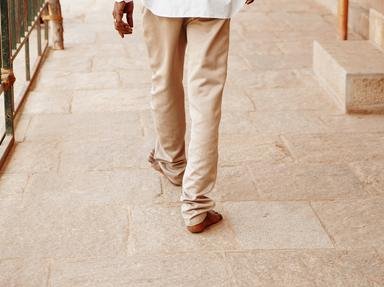Quiz Answer Key and Fun Facts
1. How about some human anatomy first off? Which one of the following bones is NOT found in the human foot?
2. How about a medical question? Your physician has just examined your feet and has informed you that you have tinea pedis. What's a more common name for this?
3. In biology or perhaps zoology, you may have encountered various taxonomical categories for the classification of animals. Many of these categories end with "pod", a derivative of the Greek for "foot". Which of the following is NOT a real classification of animals?
4. Let's try modern foreign languages. Which of the following words below is NOT a translation of the English word for "foot"? (Think about the choices--listen to how they sound).
5. How familiar are you with the composition of poetry? Poets use the word "feet" to refer to the units of rhythm or meter in a line of verse. Which of the following words is NOT the name of a metrical foot in poetry of the English language?
6. In classical drama, the central character of a famous play is called by a name that means "swollen feet", due to an injury purposefully inflicted by his parents during the character's infancy. The parents were attempting to prevent the fulfillment of a horrific prophecy. Which central character of a play am I referring to here?
7. Then there's the movie industry. Who won an Academy Award for Best Actor for his role in the film "My Left Foot"? He portrayed the Irish author and painter Christy Brown who suffered from cerebral palsy.
8. Let's listen to some music, or pretend to do so any way. In which song from the very late 1970's and early '80's would you hear the following lyrics: "Feet they hardly touch the ground" and "My feet don't hardly make no sound"?
9. The word "foot" also plays a prominent role in several idiomatic expressions and proverbs in the English language. Which of the following expressions means something somewhat similar to the idiom "the tables are turned"?
10. Finally, let's see how you measure up against this question. In the United States customary units of measurement, one foot is equal to twelve inches and three feet equal one yard, but what do 5,280 feet equal?
Source: Author
alaspooryoric
This quiz was reviewed by FunTrivia editor
Exit10 before going online.
Any errors found in FunTrivia content are routinely corrected through our feedback system.
